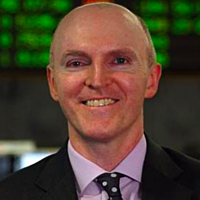A$ survives RBA and US election mayhem

Westpac Bank
The Australian dollar is emerging stronger from what was always likely to be a volatile week. It dipped under 70 cents on Monday, its weakest point since July. Then on Tuesday it had to negotiate the Reserve Bank’s biggest policy announcement since March.
The RBA announced that it was cutting both its overnight cash rate and the target on the 3 year government bond yield from 0.25% to 0.1%. It also announced $100 billion of purchases of 5 to 10 year bonds, both Commonwealth government and also debt issued by states and territories. This will be financed by money creation, also known as quantitative easing or QE.
Governor Lowe also released a speech to further explain the decision, including how the bank was focused on lowering unemployment and lifting inflation. He reiterated that the RBA didn’t think negative interest rates would be helpful.
Lowe also said that the new policy stance would mean the Aussie dollar would be lower than it would have been otherwise. Of course this does not mean the Aussie will necessarily fall and indeed soon after the RBA meeting, the currency rallied as global markets started to price in a ‘blue wave’ win for Democrats in the US election.
This move boosted the Aussie by about 1 ½ cents to above 72 cents. Equities rallied in expectation of a clean sweep that would allow a Biden administration to boost fiscal spending substantially, helping the US economy recover swiftly from the pandemic.
Of course things did not pan out smoothly for the Democrats. As of Friday morning in Sydney, we are still waiting on confirmation of the election outcome. However, the most likely scenario appears to be that Joe Biden becomes president, supported by the return of a Democratic-controlled House but with the Senate still narrowly controlled by Republicans.
Equity markets have continued to rally but this outcome is surely not very positive for the US economy. There will still be incentive for both sides to agree to at least modest pandemic relief but there’s little doubt a Republican Senate will not deliver the kind of immediate and long term fiscal support a Democratic led-Senate would have pursued.
US bond markets appear to get the message, with the 10 year Treasury yield rising as far as 0.94% as pricing for a blue wave peaked, sliding to 0.72% as voting continued on Thursday. Lower yields imply that bond investors expect slower economic growth, lower inflation and yet more quantitative easing.
Indeed while the Fed’s policy meeting on Thursday drew limited attention, Chair Powell reiterated that QE would continue at around $120 billion per month. Powell also expressed concern about the resurgence of coronavirus cases, with record daily totals above 100,000.
Meanwhile, the Bank of England announced an extra 150 billion pounds of QE. Like the RBA, its benchmark interest rate is 0.1%. But 10 year bond yields in the UK are just 0.23%, compared to 0.75% in Australia, so the Aussie dollar still offers higher rates.
In the week ahead, the main focus will remain the hoped for resolution of the US election. Closer to home, we have the Reserve Bank of New Zealand policy decision, where we expect the announcement of a program to supply banks with cheap loans if they expand lending. The RBA already has such a scheme.
In Australia, we will see updates on consumer and business confidence. But whether the Aussie dollar remains above 72 cents probably depends on how long US equity markets can continue to look on the bright side of the US election results.
Not already a Livewire member?
Sign up today to get free access to investment ideas and strategies from Australia’s leading investors.
2 topics

Sean Callow is Westpac Bank's Senior Currency Strategist, based in Sydney. Sean focuses on the Australian dollar and other G10 and Asian currencies. He has worked in strategy and economics roles in New York, London, Singapore and Melbourne.
Expertise

Sean Callow is Westpac Bank's Senior Currency Strategist, based in Sydney. Sean focuses on the Australian dollar and other G10 and Asian currencies. He has worked in strategy and economics roles in New York, London, Singapore and Melbourne.
